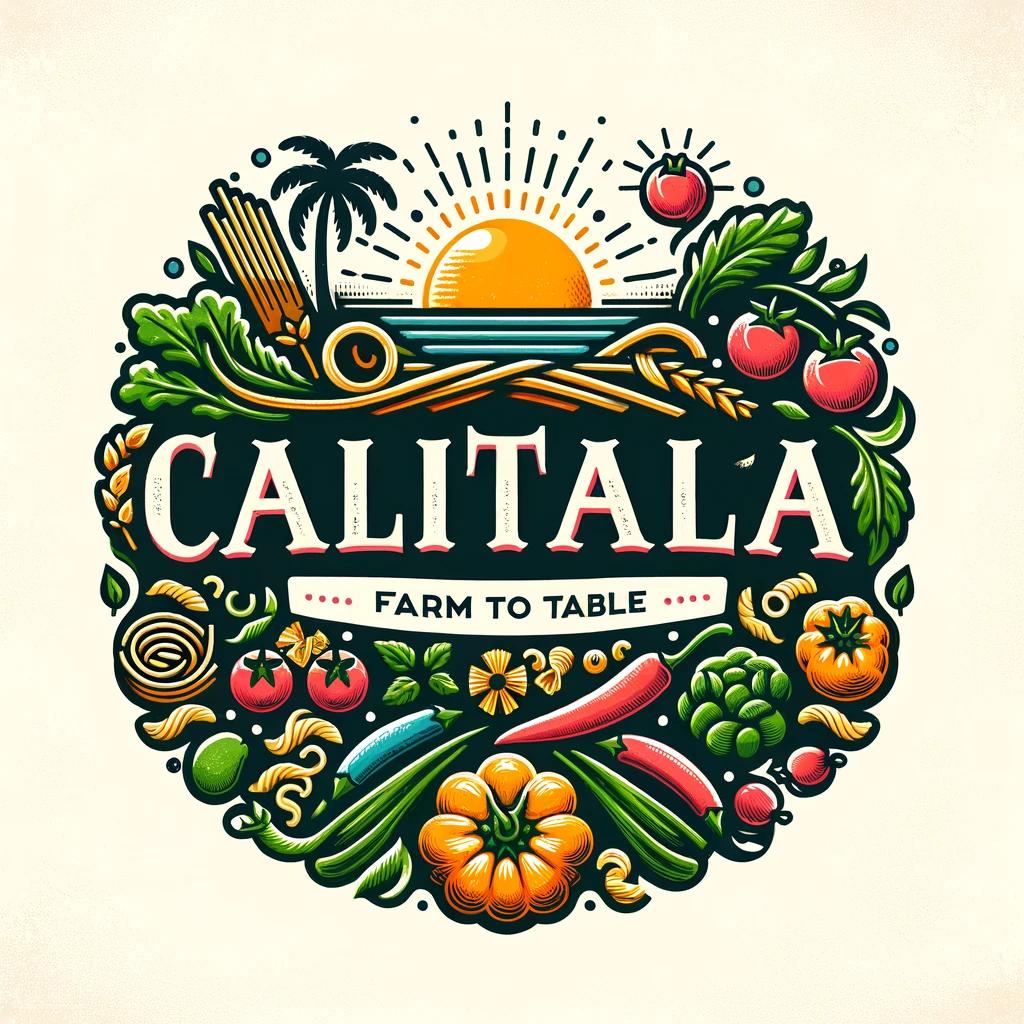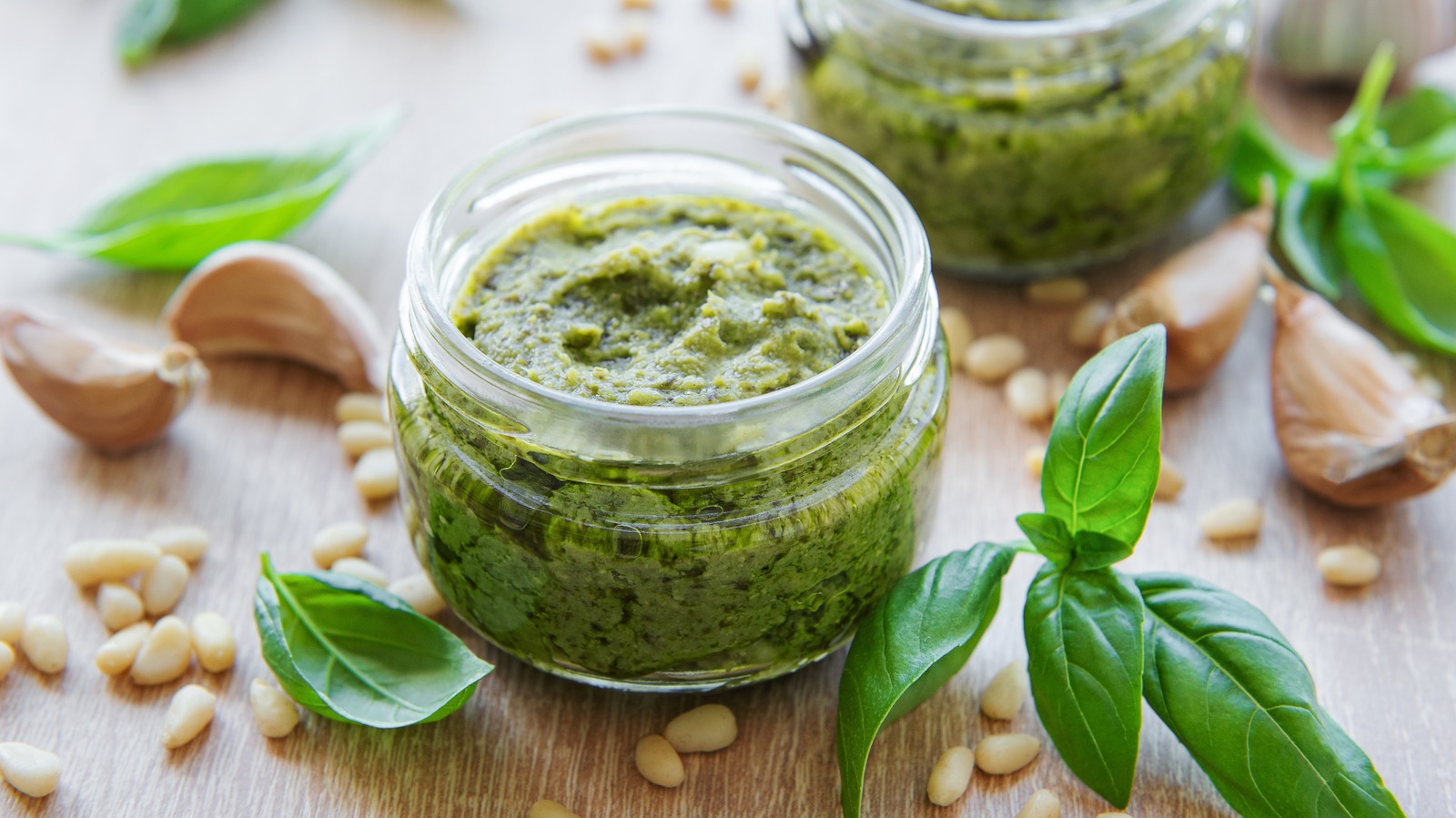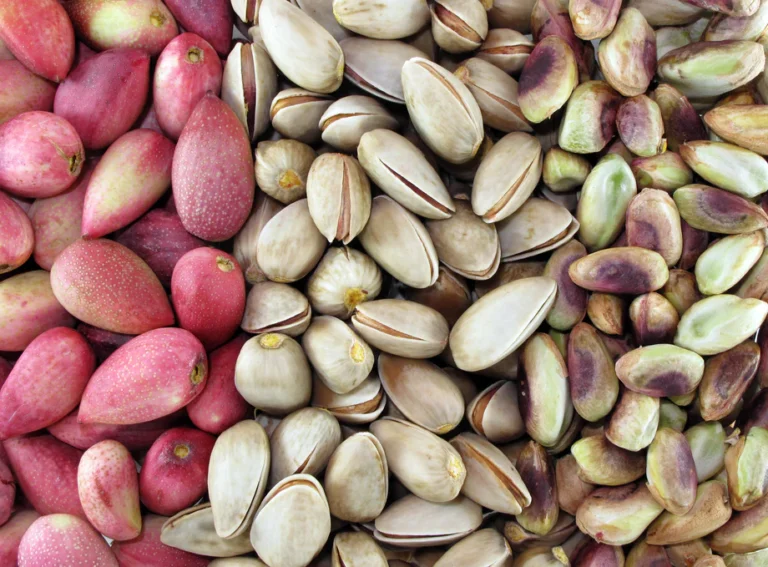Pesto is a versatile and beloved sauce originating from Italy, known for its vibrant green color and rich, aromatic flavor. Traditionally made from fresh basil, garlic, pine nuts, Parmesan cheese, and olive oil, pesto has become a staple in kitchens around the world. The secret to a perfect pesto lies in the quality of its ingredients and the method of preparation.
In this comprehensive guide to making and using pesto, we will explore the origins of pesto, the essential ingredients, step-by-step preparation methods, various pesto variations, creative culinary uses, and storage tips. Whether you’re a pesto novice or a seasoned enthusiast, this guide will help you master the art of making and using this classic sauce.
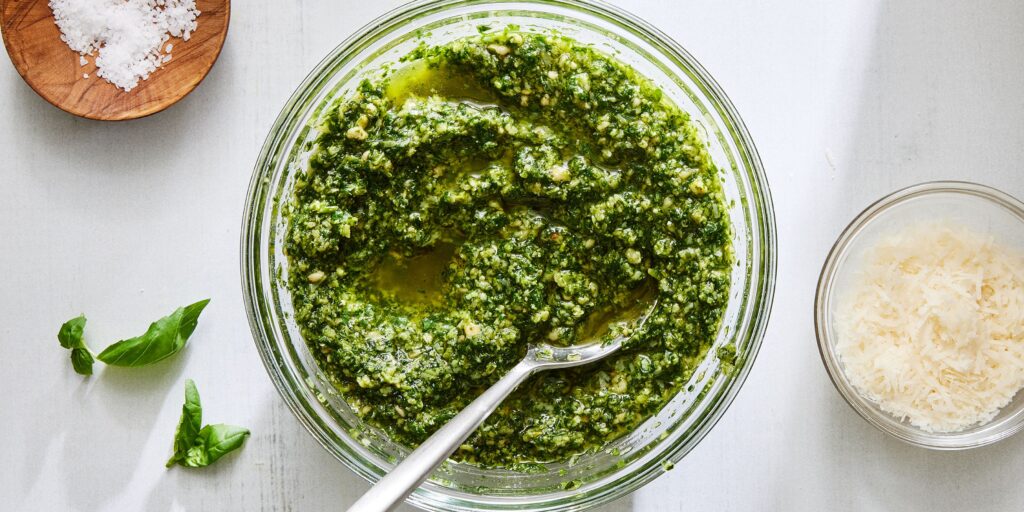
What is Pesto?
Pesto, derived from the Italian word “pestare” meaning “to pound” or “to crush,” is a traditional sauce originating from Genoa in the Liguria region of Italy. The most well-known variety is Pesto Genovese, which includes basil, garlic, pine nuts, Parmesan or Pecorino cheese, and olive oil. Over time, pesto has evolved, and many variations now exist, incorporating different herbs, nuts, and cheeses.
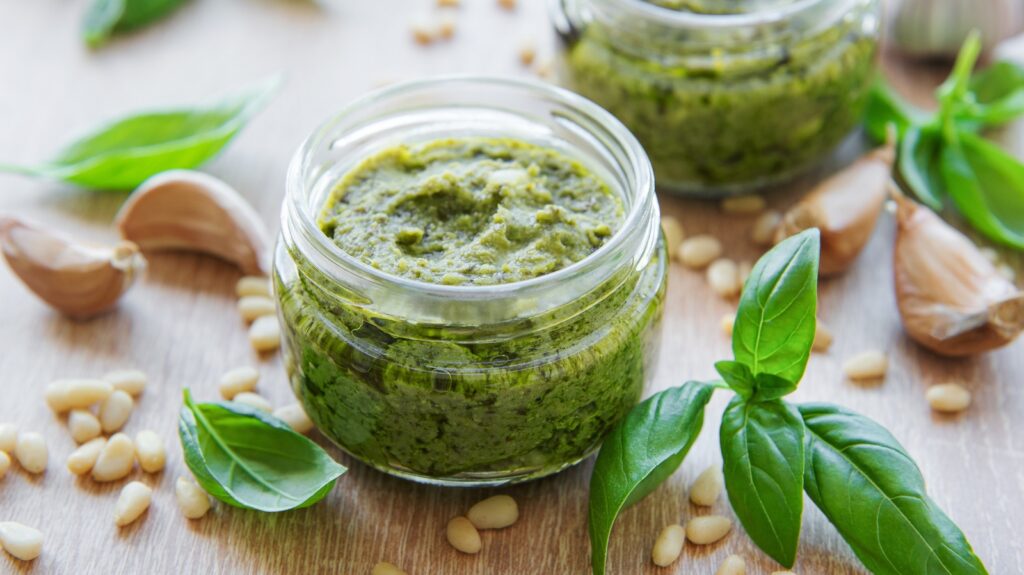
Different Types of Pesto
While Pesto Genovese is the most famous, other regional variations include:
- Pesto alla Siciliana: Made with tomatoes, almonds, and ricotta cheese, giving it a distinct red hue and creamy texture.
- Pesto alla Calabrese: Includes roasted red peppers, giving it a smoky and slightly sweet flavor.
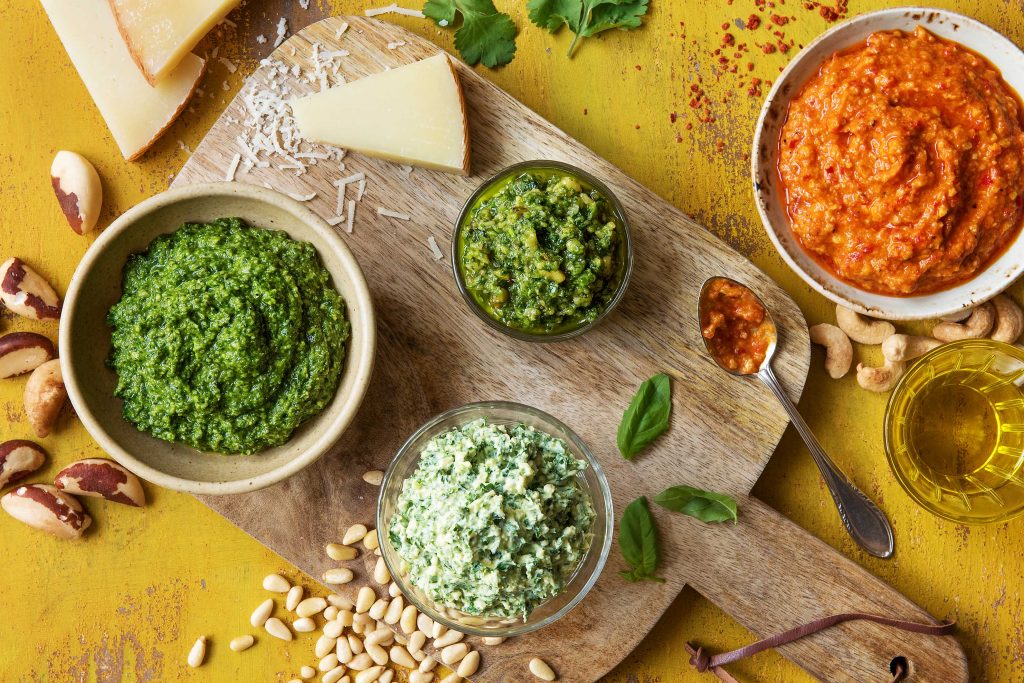
Traditional vs. Modern Preparation Methods
Traditionally, pesto is made using a mortar and pestle, which allows for a more rustic and textured sauce. The pounding action releases the essential oils and flavors of the ingredients. Modern methods often use a food processor for convenience, which creates a smoother, more homogeneous pesto.
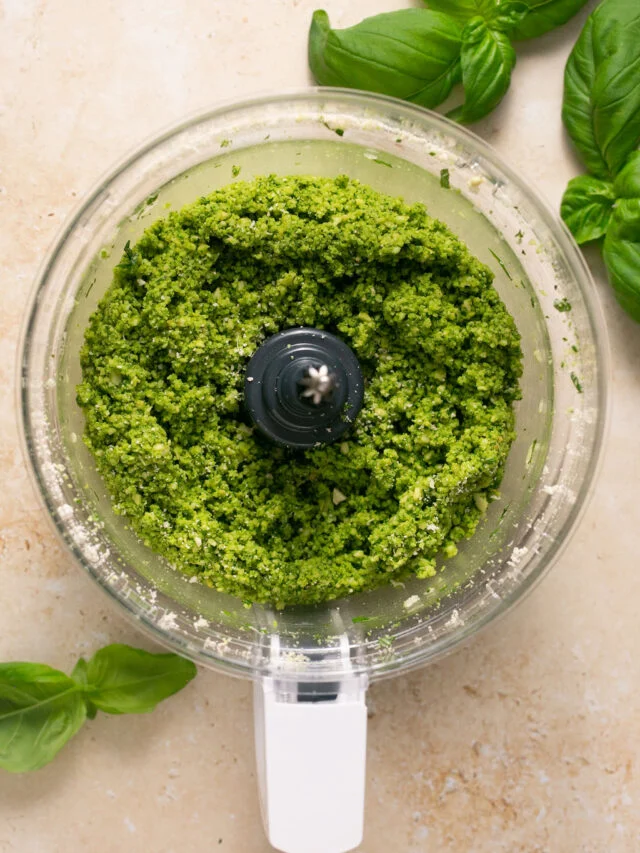

Essential Ingredients for Pesto
The quality of your pesto largely depends on the freshness and quality of its ingredients. Here are the essential components:
- Fresh Basil Leaves Basil is the star of traditional pesto. Look for bright green, fragrant leaves. Genovese basil is the preferred variety for its sweet, slightly peppery flavor.
- Pine Nuts or Alternatives Pine nuts add a creamy texture and rich flavor. Alternatives like walnuts, almonds, or even sunflower seeds can be used for a different twist.
- Garlic Fresh garlic provides a pungent kick. Adjust the amount based on your preference for spiciness.
- Parmesan or Pecorino Cheese Aged cheese adds umami and saltiness. Parmesan is the most common choice, but Pecorino Romano offers a sharper taste.
- Extra Virgin Olive Oil High-quality extra virgin olive oil is crucial. It binds the ingredients and adds a fruity, slightly peppery note.
- Salt and Pepper Season to taste with salt and freshly ground black pepper.
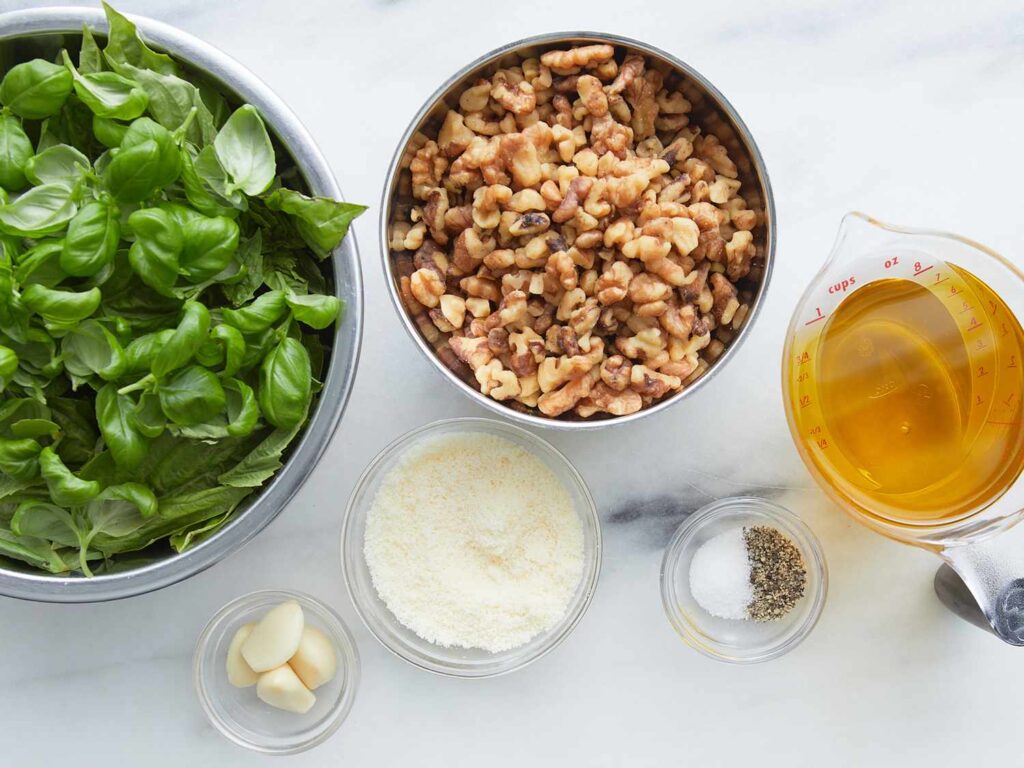
Optional Ingredients
- Lemon Juice: Adds brightness and acidity.
- Butter: For a richer, creamier pesto.
Step-by-Step Guide to Making Traditional Pesto
Preparing the Ingredients
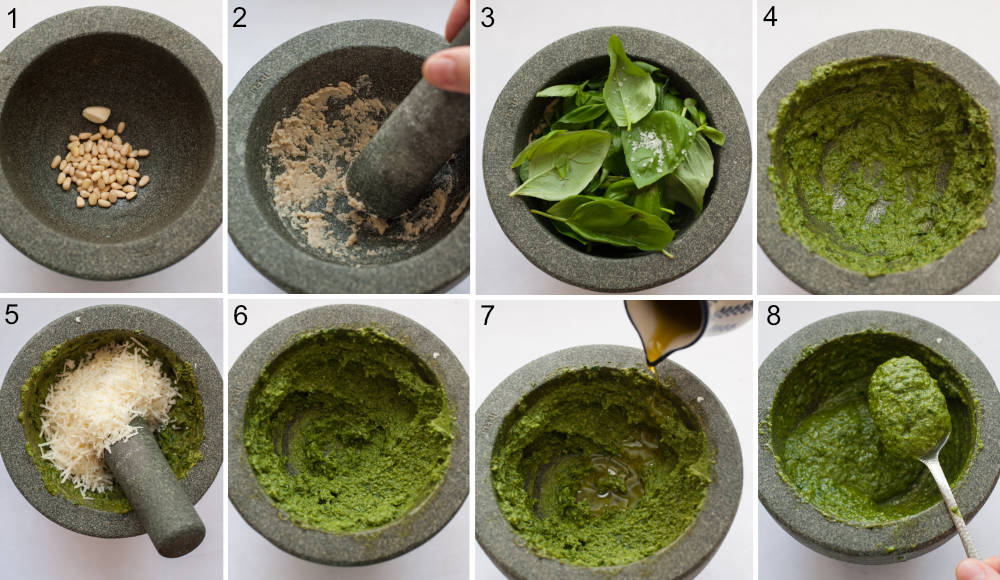
- Selecting the Best Basil Leaves: Choose fresh, vibrant basil leaves, avoiding any that are wilted or brown.
- Toasting Pine Nuts (Optional): Toasting enhances the flavor of pine nuts. Spread them on a baking sheet and toast at 350°F for 5-7 minutes, shaking occasionally.
- Grating Cheese: Freshly grate your Parmesan or Pecorino for the best texture and flavor.
- Preparing Garlic: Peel and roughly chop the garlic cloves.
Using a Food Processor vs. Mortar and Pestle
Pros and Cons of Each Method
- Mortar and Pestle: Traditional, offers a chunkier texture, more control over the consistency, and releases more flavor from the ingredients.
- Food Processor: Quick, convenient, results in a smoother pesto, but can sometimes over-process the ingredients.
Step-by-Step Instructions for Both Methods
Mortar and Pestle:
- Add garlic and a pinch of salt to the mortar. Crush into a paste.
- Addbasil leaves and pine nuts. Grind until you reach a coarse consistency.
- Gradually add grated cheese, continuing to grind.
- Slowly drizzle in olive oil while stirring to combine.
Food Processor:
- Combine garlic, basil, and pine nuts in the processor. Pulse until coarsely chopped.
- Add cheese and pulse to combine.
- With the processor running, gradually add olive oil until the desired consistency is achieved.
Combining the Ingredients
- Adding Ingredients in the Right Order: Start with garlic and salt, followed by basil and pine nuts, then cheese, and finally olive oil.
- Achieving the Perfect Texture: Aim for a balance between smooth and coarse, adjusting olive oil as needed.
- Adjusting Seasoning to Taste: Taste and add more salt, pepper, or cheese as desired.
Variations of Pesto
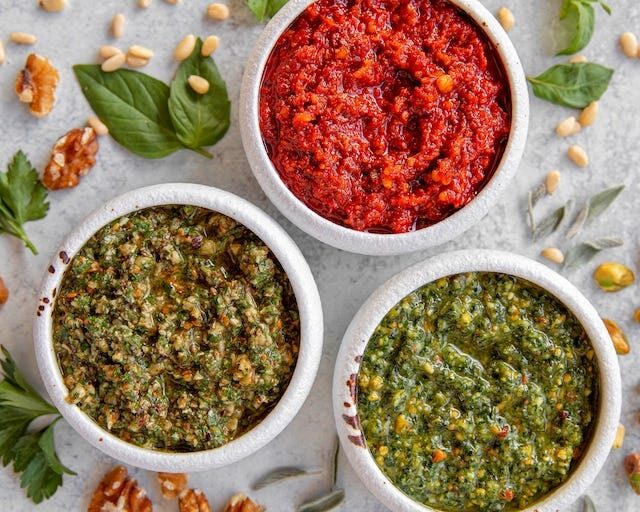
Sun-Dried Tomato Pesto
Sun Dried Tomato Pesto, known as Pesto Rosso, offers a rich, tangy twist on the traditional pesto, featuring sun-dried tomatoes, nuts, and cheese. It’s perfect for enhancing pasta dishes, spreading on sandwiches, or using as a flavorful dip for bread.
Ingredients:
- 1 cup sun-dried tomatoes (packed in oil)
- 1/2 cup fresh basil leaves
- 1/2 cup grated Parmesan cheese
- 1/3 cup pine nuts (or almonds)
- 2 garlic cloves
- 1/2 cup olive oil
- Salt and pepper to taste
Preparation:
- Combine sun-dried tomatoes, basil, Parmesan, pine nuts, and garlic in a food processor.
- Pulse until coarsely chopped.
- With the processor running, gradually add olive oil until smooth.
- Season with salt and pepper.
Pistachio Pesto
Pistachio pesto provides a nutty and creamy alternative to the classic, combining pistachios with basil and Parmesan. This variation is excellent for pasta, as a topping for roasted vegetables, or mixed into salads for a unique flavor boost.
Ingredients:
- 1 cup shelled pistachios
- 1 cup fresh basil leaves
- 1/2 cup grated Parmesan cheese
- 2 garlic cloves
- 1/2 cup olive oil
- Salt and pepper to taste
Preparation:
- Combine pistachios, basil, Parmesan, and garlic in a food processor.
- Pulse until finely chopped.
- Gradually add olive oil while processing until smooth.
- Season with salt and pepper.
Basil Pesto
Basil pesto, or Pesto Genovese, is a traditional Italian sauce made with fresh basil, pine nuts, garlic, Parmesan cheese, and olive oil. It’s versatile and can be used in pasta, on pizza, or as a spread for sandwiches and wraps.
Ingredients:
- 2 cups fresh basil leaves
- 1/2 cup pine nuts
- 2 garlic cloves
- 1/2 cup grated Parmesan cheese
- 2/3 cup olive oil
- Salt and pepper to taste
Preparation:
- Combine basil, pine nuts, and garlic in a food processor.
- Pulse until finely chopped.
- Add Parmesan cheese and pulse to combine.
- With the processor running, slowly add olive oil until smooth.
- Season with salt and pepper.
Nut-Free Pesto
For those with nut allergies or preferences:
Substituting Nuts with Seeds: Use sunflower seeds, pumpkin seeds, or omit nuts entirely.
Vegan Pesto
Replace cheese with:
Nutritional Yeast: Adds a cheesy flavor without dairy.
Different Herb Variations
Explore new flavors with alternative herbs:
- Arugula, Spinach, Kale Pesto: Use in place of or in addition to basil for a different taste and nutritional profile.
- Sun-Dried Tomato Pesto: Adds a rich, sweet flavor.
- Mint and Pea Pesto: Refreshing and sweet, perfect for spring dishes.
Creative Uses for Pesto
Pesto Pasta Recipes
- Classic Pesto Pasta: Toss spaghetti or linguine with pesto, adding a bit of pasta water to create a creamy sauce.
- Pesto Gnocchi: Coat pillowy gnocchi in pesto for a delicious twist.
- Pesto Pasta Salad: Mix pesto with cooled pasta, cherry tomatoes, and mozzarella balls for a refreshing salad.
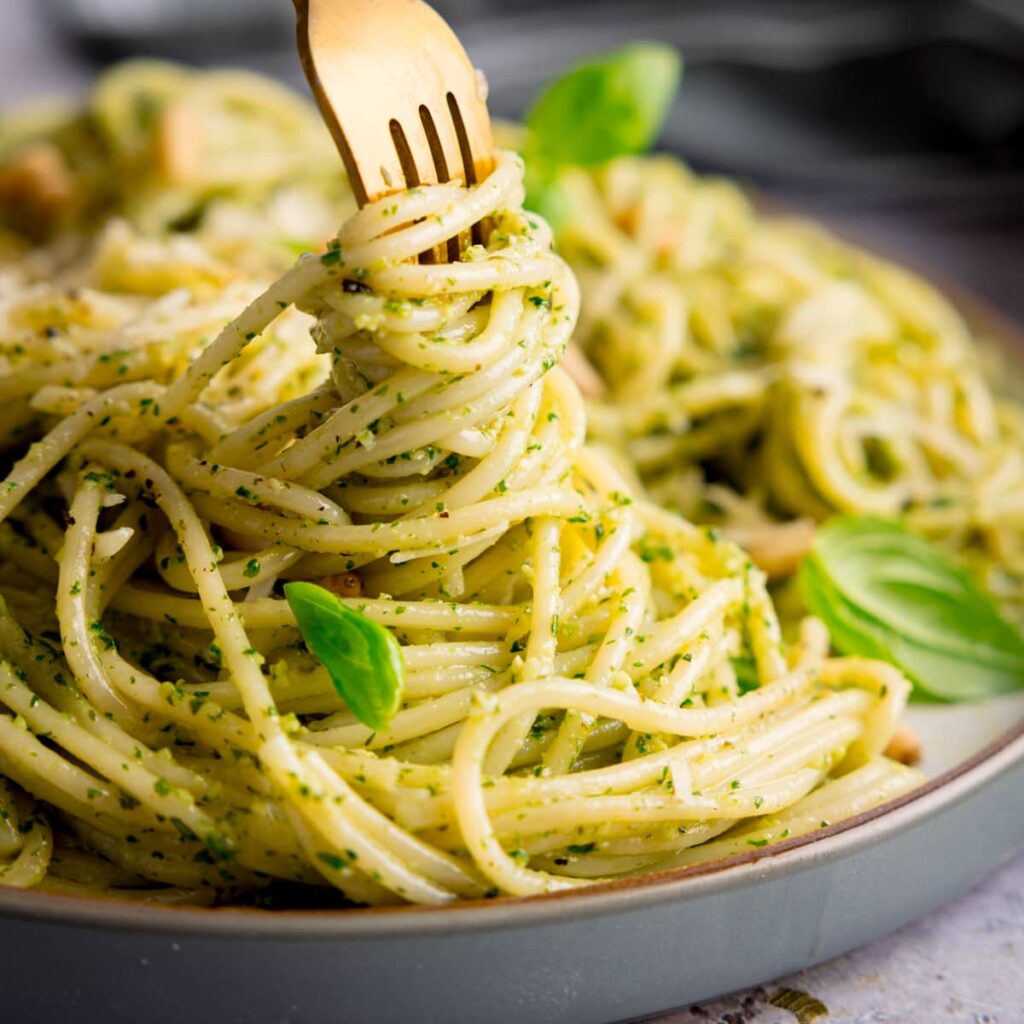
Pesto as a Sauce and Spread
- Pizza Base: Spread pesto on pizza dough instead of tomato sauce, and top with your favorite ingredients.
- Sandwich Spread: Use pesto as a flavorful spread on sandwiches and wraps.
- Salad Dressing: Whisk pesto with additional olive oil or vinegar for a zesty dressing.
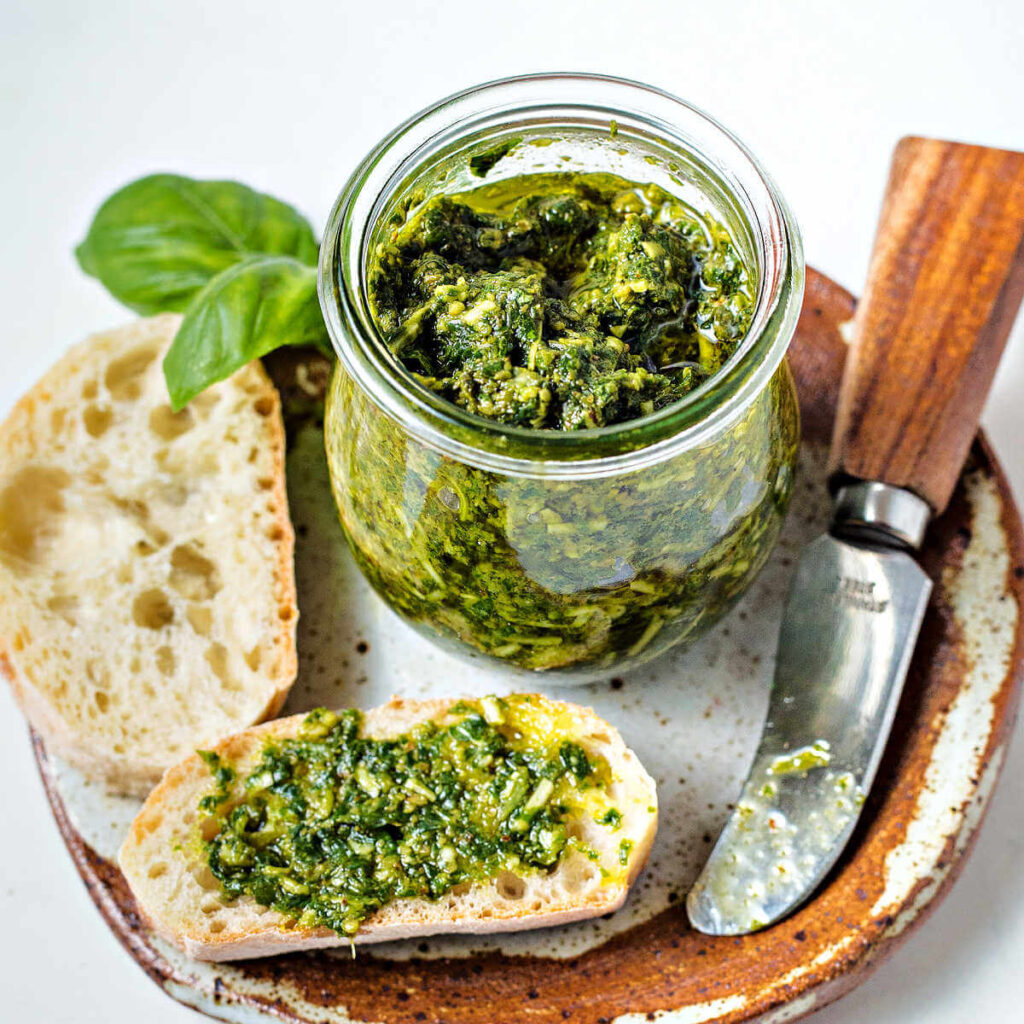
Pesto in Appetizers and Snacks
- Pesto Bruschetta: Top toasted bread with pesto and fresh tomatoes.
- Pesto Stuffed Mushrooms: Fill mushroom caps with pesto and bake until tender.
- Pesto Deviled Eggs: Mix pesto with egg yolks for a unique twist on deviled eggs.
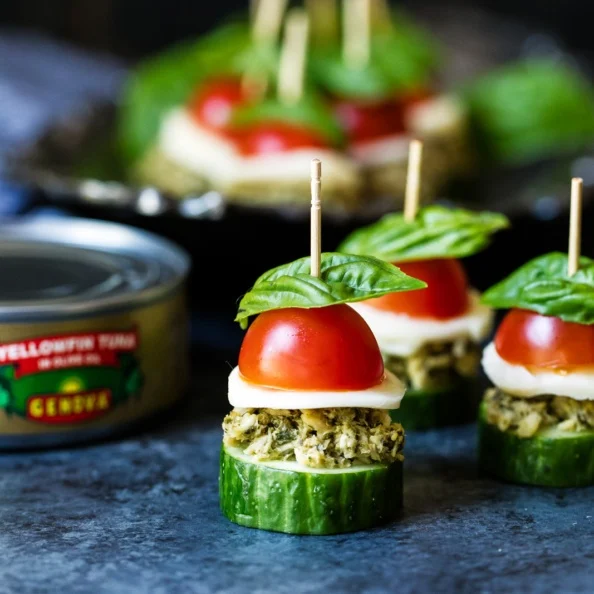
Storing and Preserving Pesto
Refrigeration Tips
- Storing Pesto in the Fridge: Keep pesto in an airtight container, covering the surface with a thin layer of olive oil to prevent discoloration.
- Using Olive Oil to Prevent Discoloration: The oil acts as a barrier to oxygen, keeping your pesto green and fresh.
Freezing Pesto
- Portioning Pesto in Ice Cube Trays: Freeze pesto in ice cube trays for easy, single-use portions.
- Best Practices for Thawing Frozen Pesto: Thaw overnight in the refrigerator or at room temperature. Avoid microwaving to preserve texture and flavor.
Frequently Asked Questions About Pesto
Conclusion
Making homemade pesto is a rewarding experience that enhances a variety of dishes with its fresh, vibrant flavor. By understanding the essential ingredients, mastering the traditional preparation methods, and exploring creative variations, you can enjoy pesto in numerous ways.
Whether you’re dressing up pasta, spreading it on sandwiches, or using it as a dip, homemade pesto is a versatile and delicious addition to your culinary repertoire. We encourage you to experiment with different ingredients and share your personal pesto recipes and tips in the comments. Enjoy the rich flavors and health benefits of this classic Italian sauce!
Disclosure: Our blog contains affiliate links to products. We may receive a commission for purchases made through these links. However, this does not impact our reviews and comparisons. We try our best to keep things fair and balanced, in order to help you make the best choice for you.
